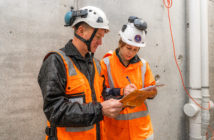Pacific Gas and Electric Company (PG&E) has successfully tested in-house and open-source technology to quickly estimate resource needs and identify where potential impacts of a major earthquake could occur in its service area.
The San Francisco-based utility’s exercise on June 8 involved more than 400 employees in San Francisco, Oakland, Concord, San Ramon and in other locations and a simulated earthquake lasting 10-25 seconds that devastated much of the Bay Area.
The drill consisted of two parts to practice the immediate response after the earthquake and restoration and customer support efforts 72 hours later.
PG&E tested its earthquake damage-modeling system, DASH (Dynamic Automated Seismic Hazard), to generate rapid, facility-specific damage estimates that help to prioritize where to send assessment and repair crews.
“Within 15 minutes of the magnitude 6.0 Napa earthquake in August 2014 – the largest earthquake in California since the magnitude 6.9 Loma Prieta earthquake in 1989 – these modeling technologies enabled us to develop resource requirements and immediately deploy more than 200 electric employees,” says Barry Anderson, PG&E’s vice president of electric distribution, who oversees the company’s emergency response organization.
The company reported it was able to restore service to about 70,000 customers in a little more than 24 hours and quickly checked on gas leaks and sent many employees to the area to check in on customers.
PG&E used ShakeCast and ShakeMaps, open-source software developed by The US Geological Survey, to produce near-real-time digital maps of ground motion and shaking intensity. It has also demonstrated the use of earthquake early warning (EEW) systems as a part of its seismic response efforts.
“Although still fairly early in development, we believe earthquake early warning will help us identify potential applications which will allow both automated and human actions in the seconds before an earthquake to protect lives, lessen property damage and ensure rapid service restoration,” Anderson adds.


